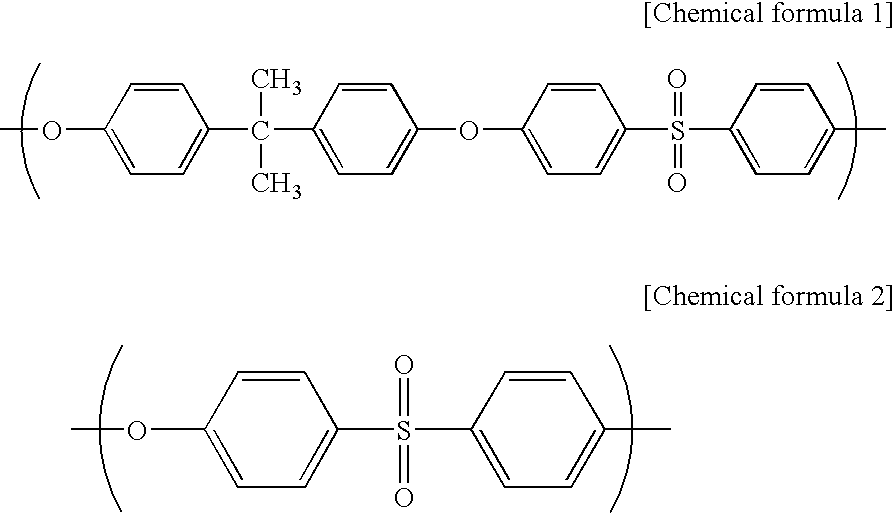Blood Purifier Package and Process for Manufacturing the Same
a technology of blood purifier and manufacturing process, which is applied in the direction of liquid handling, packaging goods type, separation process, etc., to achieve the effect of facilitating the manufacturing of selectively permeable separation membranes, facilitating the manufacture of separation membranes, and improving the safety of blood purifiers of the present invention
- Summary
- Abstract
- Description
- Claims
- Application Information
AI Technical Summary
Benefits of technology
Problems solved by technology
Method used
Image
Examples
example 1
[0085]A spinning dope was prepared from polyethersulfone (5200P, manufactured by Sumika Chemtex Company, Limited) (18.0 mass %), polyvinyl pyrrolidone (K90 manufactured by BASF) (4.2 mass %) as a hydrophilicity-imparting agent, water (1.8 mass %) as a non-solvent, triethylene glycol (TEG manufactured by MITSUI CHEMICALS, INC.) (30.4 mass %) and dimethylacetamide (DMAc manufactured by Mitsubishi Gas Chemical Company, Inc.) (45.6 mass %). The spinning dope was extruded from the outer slit of a double spinneret maintained at 45° C., and water as an inner solution was extruded from the inner injection hole of the double spinneret. The extruded semi-solid hollow fiber was allowed to pass through an air gap with a length of 600 mm at a spinning rate of 60 m / minute, and was then dipped in a solidifying bath of 70° C. (DMAc:TEG:water=12:8:80). After that, the hollow fiber was washed with RO water of 45° C. for 60 seconds followed by RO water of 80° C. for 90 seconds, and then was wound onto...
example 2
[0093]A blood purifier package was obtained in the same manners as in Example 1, except that an electron-exposure machine whose acceleration voltage was 5,000 KV was used instead of the exposure to γ-ray. The results of the evaluation of the blood purifier, which had changed with time, are shown in Tables 1 to 3.
PUM
| Property | Measurement | Unit |
|---|---|---|
| RH | aaaaa | aaaaa |
| area | aaaaa | aaaaa |
| thickness | aaaaa | aaaaa |
Abstract
Description
Claims
Application Information
 Login to View More
Login to View More - R&D
- Intellectual Property
- Life Sciences
- Materials
- Tech Scout
- Unparalleled Data Quality
- Higher Quality Content
- 60% Fewer Hallucinations
Browse by: Latest US Patents, China's latest patents, Technical Efficacy Thesaurus, Application Domain, Technology Topic, Popular Technical Reports.
© 2025 PatSnap. All rights reserved.Legal|Privacy policy|Modern Slavery Act Transparency Statement|Sitemap|About US| Contact US: help@patsnap.com

